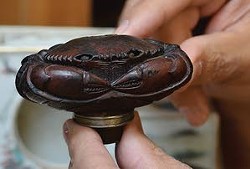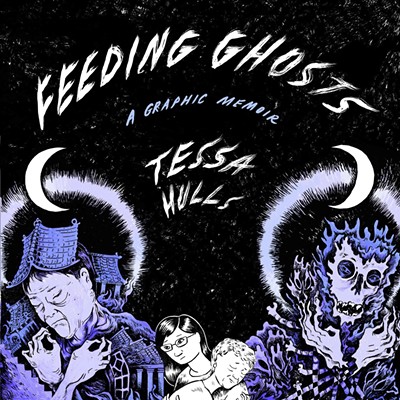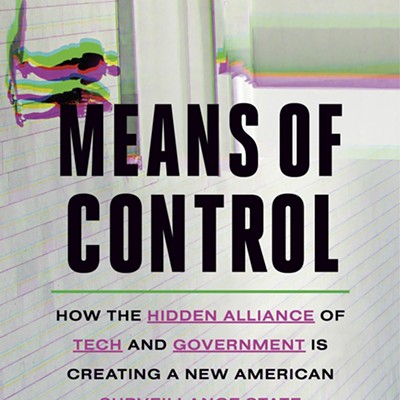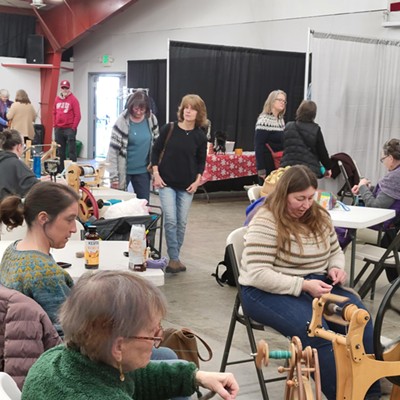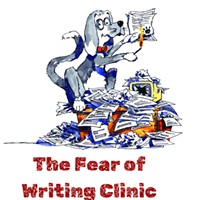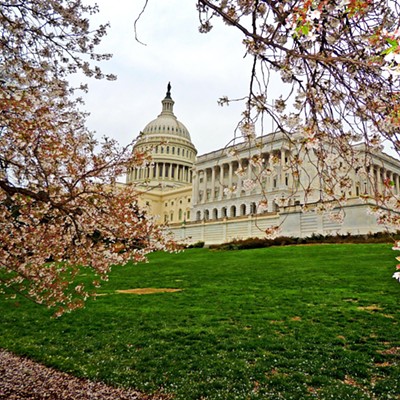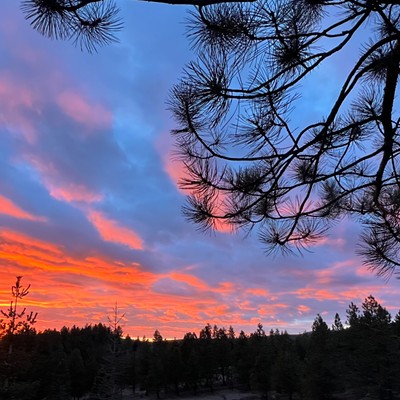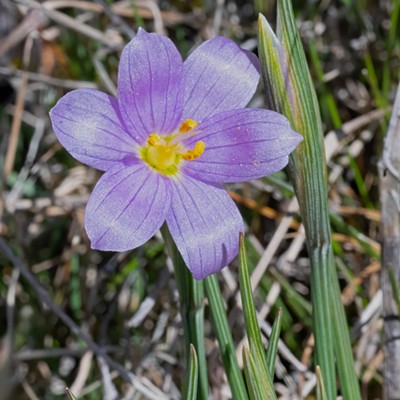MOSCOW — When he agreed to help research a Time magazine story on opium dens in Laos in 2001, Steven Martin never imagined he was on the path to becoming a world expert and an opium fiend.
Fiend was the Victorian-era term for those who could not control their appetite for the opiate. It was cheap and ubiquitous in the 1800s and seen as a scourge of society, the first big drug epidemic. Addicts went through horrific withdrawal symptoms often ending in death after three or four days. America is believed to have had the second largest population of users. The fascination altered the course of nations and Martin’s life.
Martin, 50, is the author of the memoir “Opium Fiend: A 21st Century Slave to a 19th Century Addiction.” It’s a history of the drug and how he succumbed to it. The book ends with Martin donating his collection of antique opium paraphernalia, one of the largest and most diverse in the world, to the University of Idaho where he is this month helping catalog the items.
“I’m not an advocate of opium smoking. If you read the book you’ll understand why,” says Martin, a bookish figure with brow-line glasses.
Smoking isn’t the best word. Opium was vaporized in an elaborate process that sent users to dens where it was prepared for them. Martin carefully handles some of the items that would have been used: a bowl shaped like a doorknob, a 22-inch pipe, a delicate filigreed heating lamp.
“This thing that looks like grandma’s toothbrush holder was a stand for storing and displaying opium bowls,” he says, setting a crab-shaped bowl into an opening.
“I saw these things as art even though, when you get down to it, these are instruments of self-destruction.”
Martin grew up in San Diego with a fascination for Asia. After a stint in the Navy he went overseas to Manila, Thailand and their surrounds. He has lived there off and on for the last 25 years working as a freelance travel writer. A collector since childhood, he dabbled for a time in war medals and Asian textiles, but when he bought his first opium pipe as a souvenir during the Time story he was hooked, he writes, on its “outlaw chic.”
He quickly realized little information existed on the abolished pastime. Much was destroyed when opium was banned in the early 20th century and later during China’s Cultural Revolution. His research led him to seek out the few people in the world who understood opium as it once was, and to sample it himself. By 2007 he’d hung blankets in the windows of his Bangkok apartment and was smoking 30 to 40 pipes a day. After nearly dying trying to go cold turkey, he confined himself to a Buddhist rehab monastery to get clean.
The turning point, he writes, was the realization that only by selling his collection could he keep his habit. It went against his collector’s instinct.
“Any serious collector of anything knows the life expectancy of a collection rarely exceeds the life expectancy of a collector. When the collector dies any knowledge is usually also lost,” Martin says. “I didn’t want this to happen to my collection.”
In his research Martin came across a book edited by Priscilla Wegars with an article on opium smoking techniques and materials. Wegars established the Asian American Comparative Collection at the University of Idaho. It contains an array of artifacts and materials used by scholars to chart Asian American history in the Western U.S.
“I knew they would take me seriously. That’s why I approached Priscilla to take the collection as a donation,” he says.
Some of the items in Martin’s collection are one-of-a-kind. Some were commissioned by wealthy users and are elaborately adorned.
“High hedonism,” Martin quips.
The monetary value of the collection is much less than the educational value for researchers, Wegars says. Interest crosses the lines of art, sociology, anthropology and history. One way the collection will be used is to help identify pieces found at archaeological digs. In 1870 Idaho’s Chinese population was 28 percent.
“We know Chinese did use (opium) because we find opium paraphernalia at sites,” Wegars says.
“It’s fabulous. We feel very lucky to have it, that he trusts us with his collection,” she says.
Martin continues to collect and send his findings to Moscow. His latest eBay purchase were two old French snapshots of Europeans smoking opium. He remains haunted by memories of opium’s “sweet oblivion.” He can claim to be the world expert on antique opium smoking techniques and paraphernalia and recently that expertise got him a job as a consultant on HBO’s “Boardwalk Empire.” When asked if what he went through was worth it he pauses for a long time.
“I lost a very dear friend in the process. If I could go back and change something my friend wouldn’t have lost her life. I think part of the reason I’ve become an expert on these relics is because I have direct experience using them. It really did put me through hell but I learned a lot from it and other people can learn from my mistakes.”
Steven Martin, author of the memoir “Opium Fiend: A 21st Century Slave to a 19th Century Addiction,” will discuss and sign his book: -2-4 p.m. Saturday, And Books Too, 918 Sixth St., Clarkston -3 p.m. Oct. 7, the 1912 Center, 412 E. Third St., Moscow


